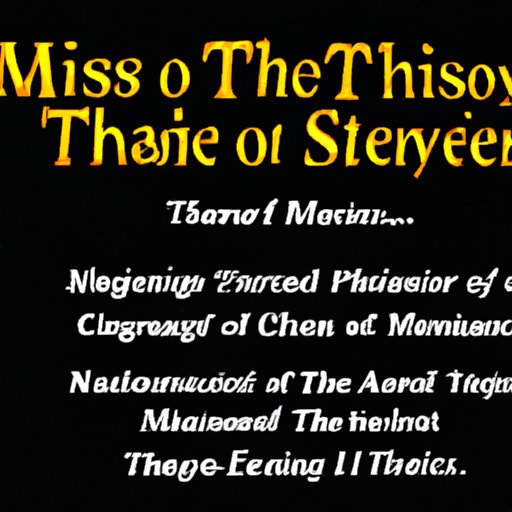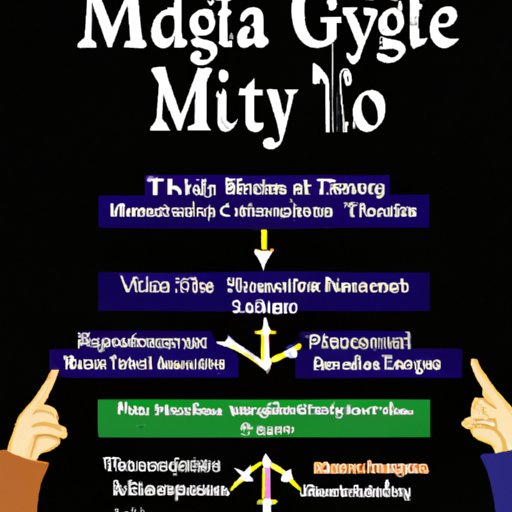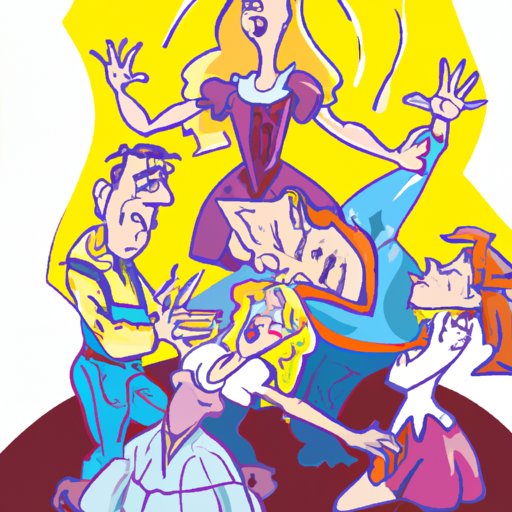Introduction
Musical theater is a genre of performing arts that combines music, lyrics, and spoken dialogue to tell a story. It’s a unique form of entertainment that has been popular for centuries and continues to captivate audiences around the world. In this article, we’ll explore what makes musical theater so special, from its history and evolution to its essential elements and current trends. By the end, you’ll have a better understanding of this powerful art form and be inspired to explore it further.

A History of Musical Theater: Exploring the Evolution of the Genre
The origins of musical theater can be traced back to ancient Greece, where plays were combined with music and dance to create a form of entertainment known as “dithyrambs.” In the Middle Ages, religious dramas were performed in churches and incorporated music and chants. These performances evolved into the first operas, which were developed in Italy during the 1600s. The first musicals, or “operettas,” were created in Germany during the mid-1800s.
Major influences on the genre include operettas, vaudeville, and minstrel shows. Operettas were lighthearted stories set to music and were often performed in theaters. Vaudeville was a type of variety show featuring singing, dancing, and skits. Minstrel shows featured white performers in blackface performing songs and skits in exaggerated stereotypes of African Americans. These early forms of musical theater paved the way for the modern musicals we know today.
Popular examples of early musicals include Gilbert and Sullivan’s “The Pirates of Penzance” (1879), George M. Cohan’s “Forty-Five Minutes from Broadway” (1906), and Florenz Ziegfeld’s “Follies” (1908). These shows helped to define the genre and established some of the conventions that are still used in musical theater today.
Musical Theater: An Introduction to the Art Form
At its core, musical theater is a combination of music, lyrics, and spoken dialogue. The music and lyrics provide the emotional underpinnings of the story while the dialogue helps to advance the plot. This integration of song and dialogue is what makes musical theater so unique and powerful.
There are many different types of musicals, ranging from classic Broadway shows to contemporary pop musicals. Some musicals focus on romance, while others explore social issues. Some are lighthearted and humorous, while others are dark and intense. No matter the style or subject matter, all musicals share certain common elements.
The music, lyrics, and choreography in a musical are essential components that help to bring the story to life. Music helps to create mood and emotion, while lyrics provide insight into a character’s thoughts and feelings. Choreography adds physicality to the performance and helps to tell the story in a visually engaging way.
The Essential Elements of Musical Theater
In order for a musical to be successful, it must have strong characters, a compelling story, and engaging music, lyrics, and choreography. Character development is key to any musical. Characters must be believable and relatable in order for the audience to connect with them. Storytelling is also an important element of musical theater; the story must be engaging and emotionally compelling in order for the audience to stay invested.
Music, lyrics, and choreography are essential elements of any musical. Music helps to set the tone and atmosphere of the show, while lyrics provide insight into a character’s thoughts and feelings. Choreography adds physicality to the performance and helps to tell the story in a visually engaging way. All three elements must work together in order for the musical to be successful.

A Guide to Understanding Musical Theater
Understanding musical theater can be tricky, especially if you’re new to the genre. However, there are some tips that can help make it easier. First, try to identify the different elements of a musical. Take note of the characters, the setting, and the plot. Pay attention to the music, lyrics, and choreography and how they contribute to the overall story. This will help you get a better understanding of the show.
Another helpful tip is to watch the musical more than once. Seeing the show multiple times can help you pick up on nuances that you may have missed the first time around. Additionally, reading reviews and discussing the show with friends can help to deepen your understanding of the musical.

Exploring the Popularity of Musical Theater Through the Ages
Musical theater has been popular for centuries, from the ancient Greeks to the present day. So why has this art form endured for so long? One reason is that musicals offer a unique form of entertainment that combines music, lyrics, and storytelling. They also provide a way for people to escape reality and experience something magical. Additionally, musicals often explore topics that are relevant to society, making them relatable to audiences.
Over the years, musicals have gone through different phases of popularity. Some eras, such as the 1950s and 1960s, were dominated by classic Broadway shows like “West Side Story” and “My Fair Lady.” Other eras saw the emergence of contemporary pop musicals like “Rent” and “Hamilton.” Each era has its own unique style and flavor, but all have contributed to the rich tapestry of musical theater.
Musicals have had a profound impact on culture. They have provided a platform for exploring difficult topics, such as race and sexuality, and have helped to shape public opinion. They have also served as a source of inspiration, providing hope and joy in difficult times. Musical theater has the power to move us, to make us laugh, and to make us think.
Conclusion
Musical theater is a unique and powerful art form that has been popular for centuries. It combines music, lyrics, and spoken dialogue to tell a story in a captivating and emotionally compelling way. By understanding the history and evolution of musical theater, exploring its essential elements, and examining its current trends, we can gain a better appreciation of this art form and be inspired to explore it further.
(Note: Is this article not meeting your expectations? Do you have knowledge or insights to share? Unlock new opportunities and expand your reach by joining our authors team. Click Registration to join us and share your expertise with our readers.)
